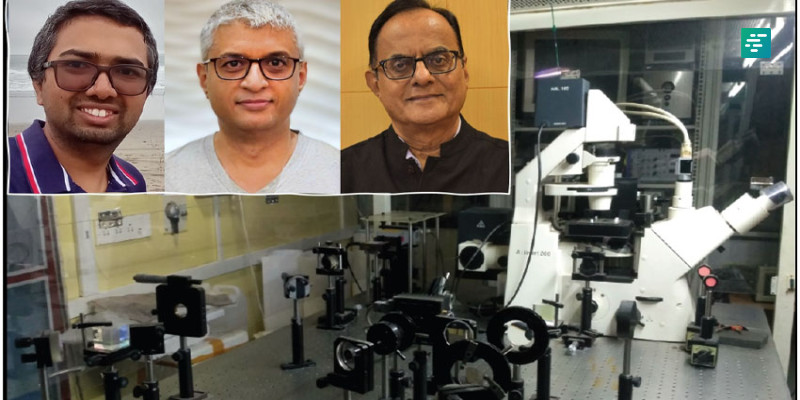
IISc scientists design 100 per cent efficient ‘micro heat engine’ along with JNCASR
- Campus Updates
- 03 Nov, 2023
- 632
After years of struggle, a “micro heat engine”, that can produce maximum power at maximum efficiency, has been successfully designed by the Indian Institute of Science (IISc) and the Jawaharlal Nehru Centre for Advanced Scientific Research (JNCASR) here.
Practical heat engines are limited to a theoretical efficiency called the Carnot limit, which sets a cap on how much heat can be converted to useful work. “Since the 1970s, people have been attempting to address the power-efficiency trade-off. In the early 2000s, researchers explored microscopic systems to overcome this challenge. In 2017, a paper claimed that it was impossible to solve this thermodynamic puzzle,” said Sudeesh Krishnamurthy, former Ph D student at the Department of Physics, IISc, and first author of the study published in Nature Communications on October 27.

Heat engines convert heat into work. For example, moving a piston in a certain direction. For an engine to be 100% efficient when the process is reversed – the piston returns to its original state – there should be no heat wasted, which is what was proposed by French physicist Sadi Carnot in 1824.
This is only theoretically possible if the process happens extremely slowly. But that also means that the power output will be zero, making the engine practically useless, according to a press release from the IISc. This is known as power-efficiency tradeoff.
Team had designed engine with live bacterium
In the current study, the team mimicked the functioning of a conventional heat engine at the micron scale. Instead of using a mix of gas and fuel, the team used a tiny gel-like colloidal bead and used a laser beam to direct its motion, similar to how the piston works in a macroscopic engine.
The team members also used a rapidly changing electric field to cycle the engine between two states. Under these conditions, they found that the waste heat dispersed drastically reduced, bringing the efficiency close to 95% of the limit specified by Carnot.
“What we have achieved is a reduction in heat distribution time through the introduction of the electric field. This reduction in heat distribution time allows the engine to operate at high efficiency and simultaneously yield a large power output even while operating at high speeds,” Krishnamurthy said.
Previously, the team designed a high-power engine that used a live bacterium to push the particle and power the system. This time, the researchers replaced the bacterium with an electric field to move the particle more efficiently in the colloidal medium.
